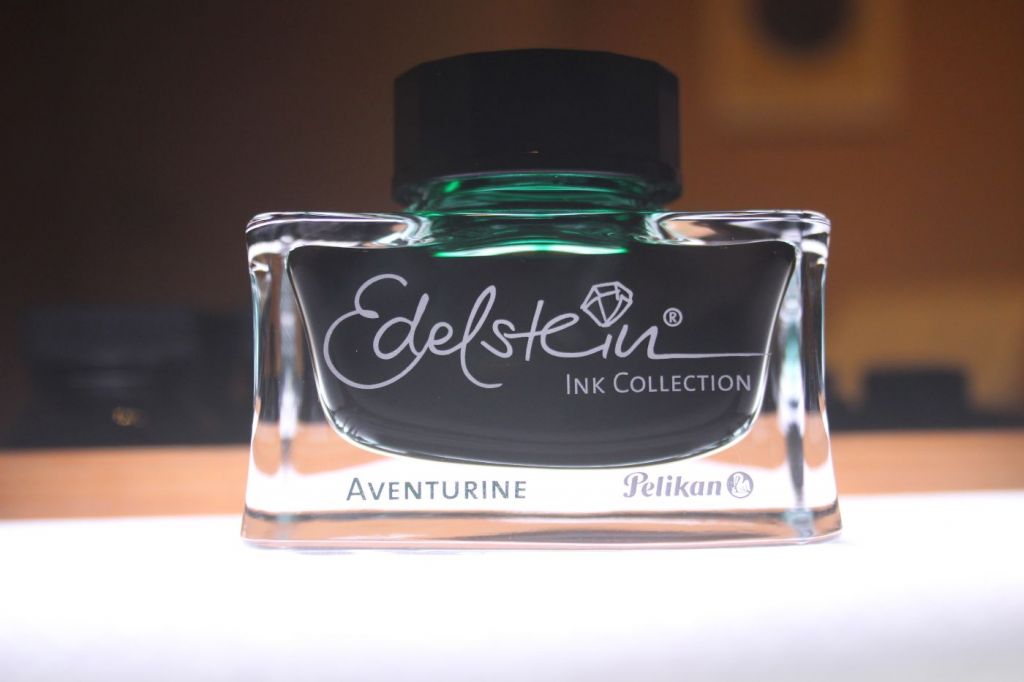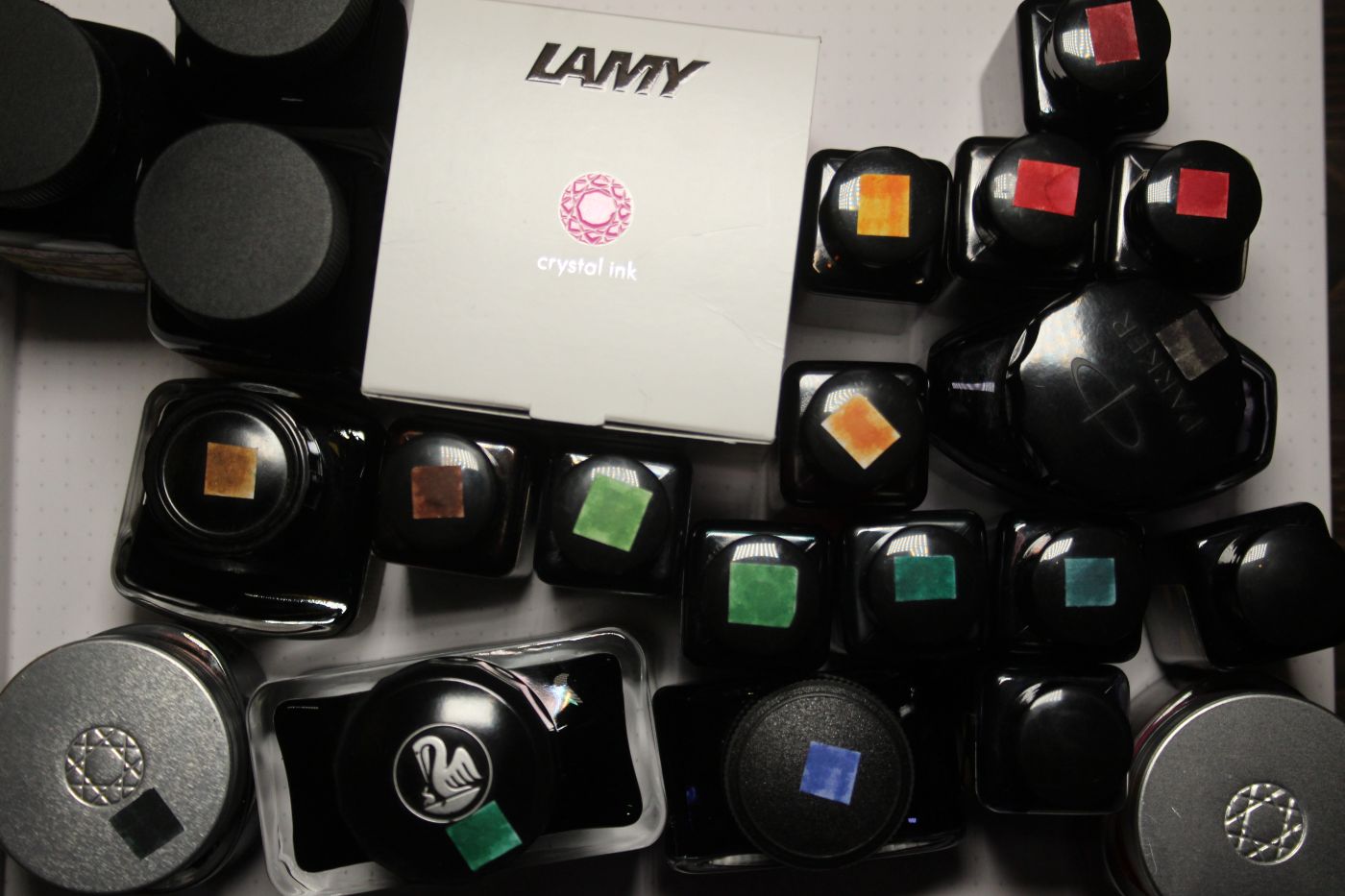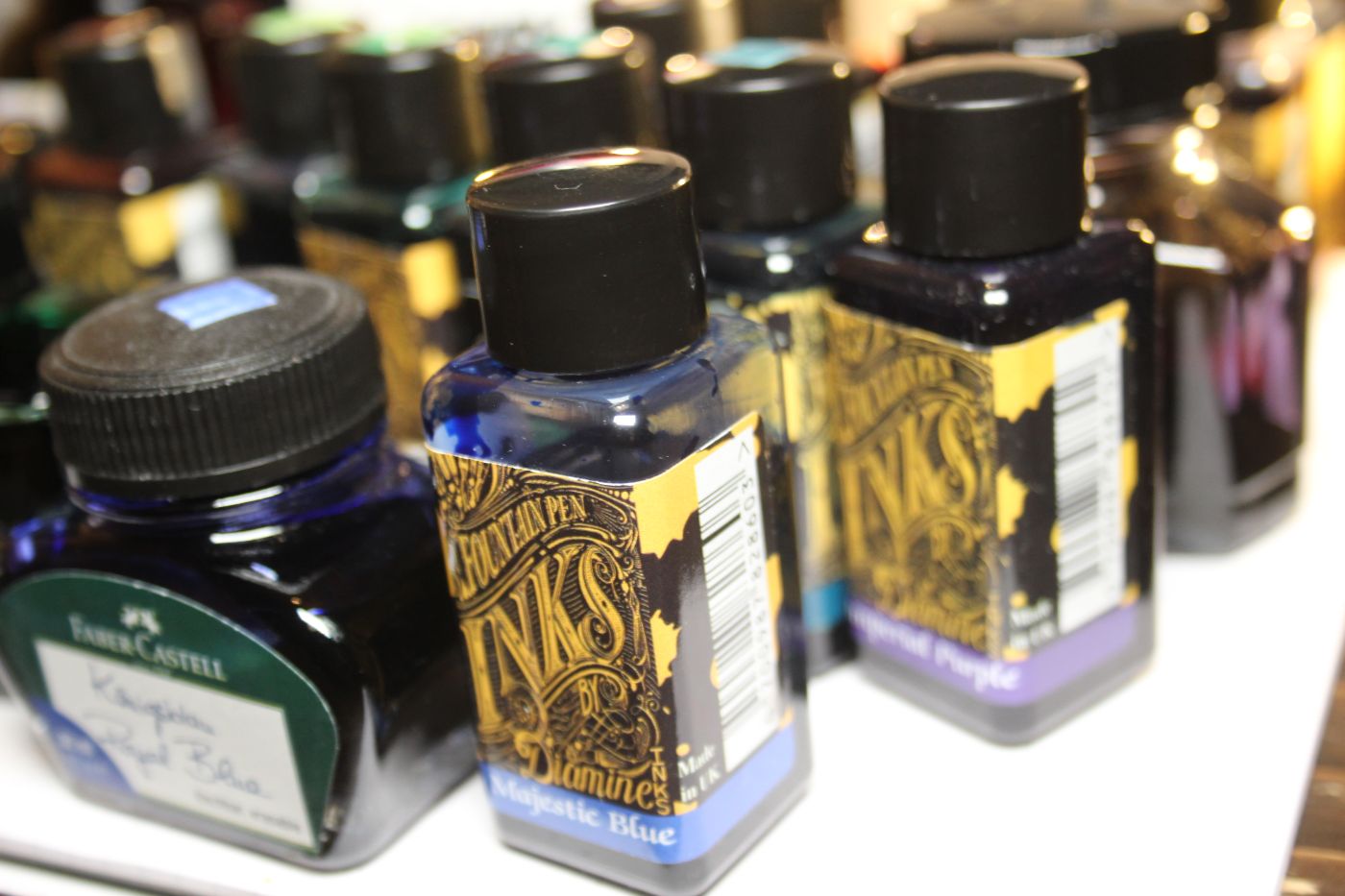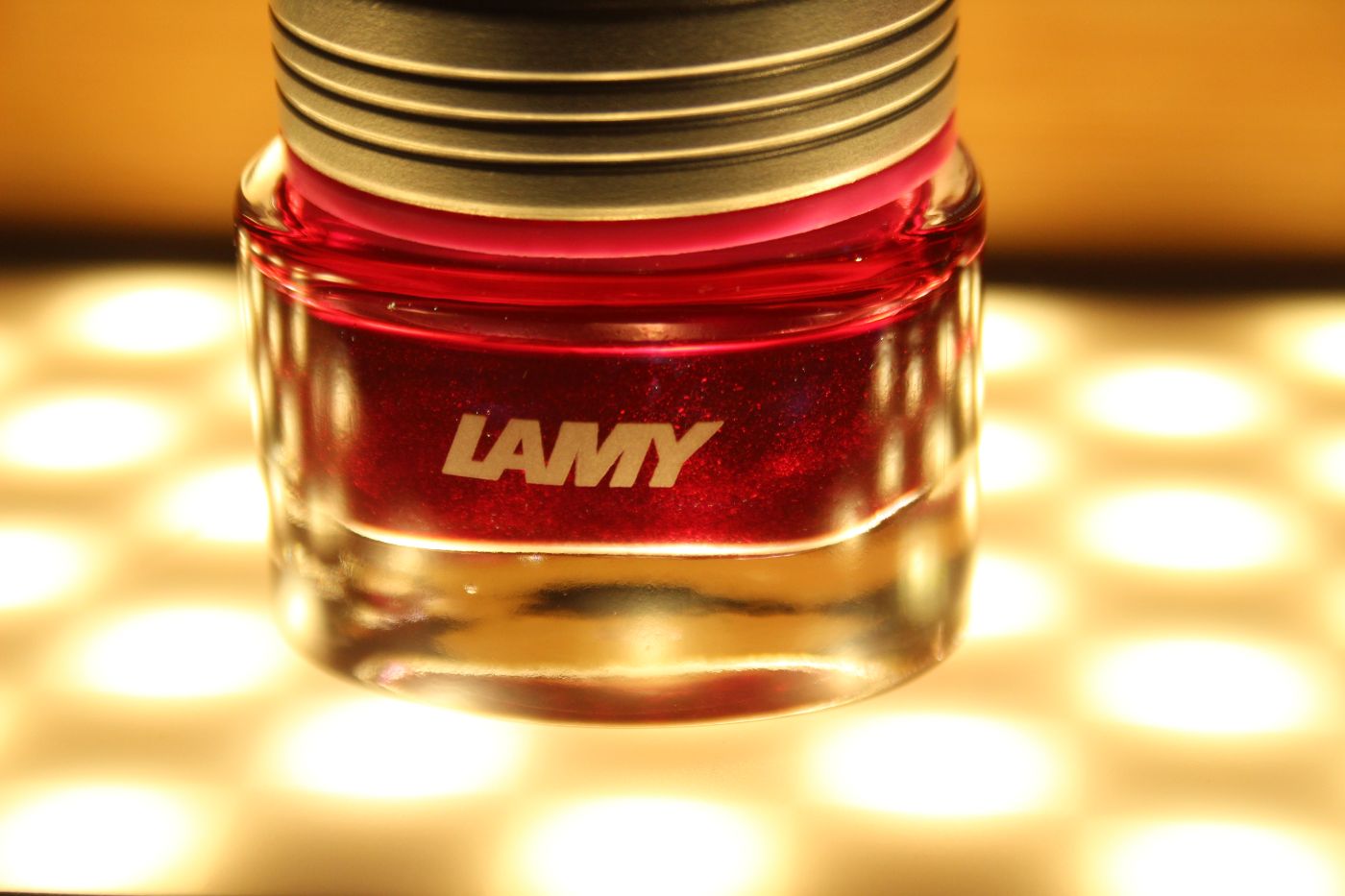Does Fountain Pen Ink Expire? (Shelf Life of Bottle & Cartridge)

I have a lot of bottled fountain pen ink, and some of them are years old. Will they expire or go bad? Since I couldn't find a concise answer, I thought I'd write this article.
Does fountain pen ink expire? Fountain pen ink rarely expires. Some manufacturers do give an expire date, which is a best before guarantee. Most regular inks by well-known brands will last decades if stored and used correctly. The main reason for expiry is contamination. You can recognize bad ink from slime, mould, or a bad smell.
There is a trend, however, that might result in your new inks not lasting as long as bottles that are decades old already.
In this article:
What is the Shelf Life of Fountain Pen Ink?
What is the shelf life of fountain pen ink? Based on anecdotal evidence, the shelf life of most fountain pen inks ranges anywhere from 10 - 60 years. Unopened bottles have a much longer shelf life than opened ones, but even opened bottles can be used dozens of years after opening, as long as they are not contaminated through unhygienic use.
Below is some anecdotal evidence I have aggregated from my own experience and forums on the internet, but it shows that there are plenty of bottles that are half a century old and can still be used without any problems.
Shelf life of bottled ink, based on anecdotal evidence:
| Brand | Age | State |
|---|---|---|
| Montblanc | 10 years | good |
| Waterman | 60 years | good |
| Parker Quink | 50 years | good |
| Waterman South Seas Blue | decades | good |
| Diamine | decades | good |
| Noodlers | 5 years | good |
| Sheaffer Skrip | 10 years | good |
| Lamy T52 Copper Orange | 4 years | good |
| Carter | 10 years | bad |
| Pelikan | 10 years | bad |
Please note: the fact that some inks didn’t hold up here doesn’t mean that these brands are less durable. It’s anecdotal, so it’s unfair to categorize these brands based on it.
Most regular inks will last decades unopened. In nearly all cases, it is one particular ink color or recipe (due to a specific ingredient), or a specific batch (due to contamination) that goes bad. Most standard inks of well-known brands will hold up really well.
I remember one time I really internalized the concept of a fountain pen,—probably after years of using one (I'm not always the first to the party). It finally dawned on me that I could use any ink I want! I opened a fountain pen webshop, typed in 'ink', and witnessed my previous paradigm melting: hundreds of colors within reach and within means. The best part (or the worst), is that ink isn't that expensive. This realization kicked off an acquisition spree that ended in me owning 21 bottles. It was only months later that I started wondering whether fountain pen ink has any shelf life at all, or whether I'd be in for a royal chemical disposal run shortly.

And now I write you to share great news: you can safely continue building your ink cellar.
Luckily, it turns out that fountain pen ink has a very decent shelf life if you store it properly and take the right precautions. It's a rather simple substance; however, there are some inks and ingredients you should probably skip, and I'll list those below.
How do bottled inks age?
If ink goes bad, it will do so within a couple of years, and it will probably state an expiry date on the packaging. The ink would have some ingredient that is prone to deterioration.
In most cases, however, ink might only lose some of its vibrancy or saturation. Beyond that, not a lot will happen probably. Pigment-rich inks might settle - which means the pigments and the water might separate over time. If your ink is otherwise okay, simply shake it and move on.
Your ink could change in color over time, especially when exposed to UV sunlight. Store your inks in a dark, dry place, and they will be fine. Ink might evaporate through the seal, which will wear down over time.
Older inks might last longer than modern ones
Some modern inks might be more prone to going bad, due to new EU regulations that regulate the addition of biocide addition (which kills bacteria). Fountain pen inks are made of five main ingredients:
- water
- dyes
- lubricants
- surfactants - to bind the ink together
- biocides - to kill bacteria
Older inks (pre-2008 I believe) are more likely to contain more biocides. After 2008, government regulation (at least in the EU) has regulated the use of biocides more heavily, which means that some inks (not all) are more prone to expiring or going bad. We’ll just have to wait and see what inks will hold up well.
Most ink manufacturers don’t provide an expiry date
The only brand that provides an expire date that I know of is Montblanc. They give an expiry date of five years after the production date. It seems to be more a ‘best before’ indication than anything else, and there is plenty of anecdotal evidence to prove that Montblanc inks will last for decades.
Brands that are known to last a long time:
- Diamine
- Noodler’s
- Waterman
- Parker Quink
- Pilot and Japanese brands in general
I have seen these brands come up time and again across forum threads and websites. I can second Diamine, Noodler’s, and Quink, which I have owned myself for a couple of years, with Quink now on my shelf for about five years, in direct sunlight, and not a sign of deterioration.

Shelf life of fountain pen cartridges
Do fountain pen ink cartridges expire? Since cartridges are sealed off until use, they are unlikely to spoil due to contamination. However, they are likely to dry out due to their plastic packaging, which is porous, allowing the water content of the ink to evaporate slowly. It will take multiple years for a cartridge to dry out completely.
How To Recognize Bad Ink
Here’s how you can recognize fountain pen ink that has gone bad:
- it looks dry
- it has a lot of sediment at the bottom
- it has a bad smell
- the bottle contains slime
- the bottle contains mold
Avoid dry ink
Ink is mostly water, and water will evaporate over time. You can recognize evaporation by dry sediment in the bottle. The evaporation makes the ink thicker and more likely to clog up your feed. Cleaning out a clogged up feed can be painstaking, so maybe avoid really dry-looking ink bottles.
In some cases, you can simply dilute the ink by adding some water and shaking the bottle (after capping it, that is). However, you should inspect the diluted ink carefully. If it contains a lot of sediment and clots, I wouldn’t risk the chance of it clogging up my feed.
Avoid inks that look slimy, moldy, or that have a bad smell
Any ink bottle that contains slime or mold is definitely contaminated. The ink is no longer useable and should be thrown out immediately. The same goes for inks that have a bad smell to them, (for example, rotten eggs). Those are the best indicators for contamination, and you shouldn’t want to put them in your pen. They are beyond saving, won’t write properly, and will probably ruin your pen.
Factors that determine shelf life
Of course, the correct answer is always 'it depends ‘. Clincher. There are a lot of factors that determine how well a bottle of ink will hold up against time:
- packaging material
- the way you store it
- the type of ink
- the color
- the ingredients used
Most regular fountain pen inks will easily last decades, as long as the bottle doesn’t get contaminated. Unopened bottles shouldn’t give any problems, as long as it’s not some wildly experimental ink. The main reason for fountain pen ink going bad is contamination through use. If an unopened bottle of ink has gone bad, it is either from a bad batch to begin with, or it contains ingredients that are prone to expiration.
I have created an Inter-Generational Ink Storage Solution (just made that up) for die-hard collectors. You can read the article on how to set up your Inter-Generational Ink Storage here.
How to ensure your ink goes bad
Some things you can do to ensure your ink will turn sour.
- You should definitely contaminate your fresh ink bottles by not cleaning your pens and nibs before filling them directly from the bottle.
- You should leave your bottles uncapped for long periods of time.
- You should store your ink bottles in direct sunlight behind the window.
- You should only collect experimental inks with low biocide content and preferably vegetable pigments.
- You should only collect boutique inks from obscure makers that seem to go out of business continuously.
Inks and ingredients that won’t age well
- Iron gall inks don’t age well over time
- Monteverde green, blue, teal (2019)
- Parker “51” Ink
- Parker Superchrome Ink
For a good overview of vintage inks, I recommend reading this article on FountainPenLove.com.
How to Store Ink the Right Way
If you want to be safe, you store your ink in an airtight container in a closed cabin deep in the bellows of your house. If you’re somewhat like me though, you will probably want to put your ink bottles on display, without any packaging, in a brilliantly-lit glass cabinet, preferably in front of the window, so the sun lights up each one.

You’ll probably be fine with most inks, and if it gives you joy, well, who cares you’ll spoil one or two bottles after two decades.
If you’re the Prussian type, though, and want to do it the proper way, here’s how you do it.
You want to avoid direct sunlight, heat, and contamination. You also need to take some other precautions. For a full list of ways to keep your ink usable for a long time, read my article on How to Store Ink the Right Way.
Anecdotal Evidence Ink Will Never Expire
Below is a list of anecdotal evidence I’ve used to aggregate the data above. I want to give each source its’ due, so I’ll link to the specific pages and threads I’ve used. Most anecdotal evidence comes from one thread on The Fountain Pen Network, which was especially useful.
I own Noodler’s and a lot of Diamine (I live in The Netherlands), and they are just fine after a couple of years out in the open.
“While I have had a few bottles go bad, never has that happened with Noodler’s, Diamine, or any Japanese ink in my collection. Nor has it happened with ink in my collection manufactured more than five years ago.”
-- Inkophile.com
” I am a regular wwii and pre-wwii ink user. I can say with certainty ink will last you a very long time.”
-- eharriett in Can ink expire? in /fountainpens on Reddit
Inks That Have Aged Better than Me
- Waterman from the 1980s
- Montblanc & Skrip survived 10 years in a trailer in Las Vegas
- 60-year old Waterman ink
- Sheaffer Skrip and Parker Quink 50-60 years old, unopened
- Waterman South Seas Blue decades old
Inks That Didn’t Make It
Did you find the answer to your specific question?
👍 60 👎 3
Comments
Stephanie L Manley
Thanks for this! I have often wondered, and I have purchased so much ink!
Jarvis
Thanks for this very helpful and enjoyable article. Somewhere I’d heard that fountain pen inks were only good for 2 or 3 years and I’m delighted to learn that all the beauties I’ve collected will be usable for years to come.
Susanna B
THANK YOU !!!!!! I STUMBLED across your site. What SERENDIPITY !!!!! You answered MORE questions than I had conceived of !!!!!! Please add me to your contacts !!! — Susanna.
ALLAN MANN
Great info I have purchased so much ink in the past 10 or 12 years due to my fascination with fountain pens. Good to know they will probably outlive me
Allan
Pieter J.
I was taught to write with a fountain pen when I was 6 years old and I am still still using a fountain pen every day at 67 years old. I use “Dip Pens” at home of which I have a good collection of with many vintage “Ink Wells”. I also have a collection of 1 pint bottles of black ink some of which are over 100 years old and still very useable.
People are very surprised when they see me using my fountain pen in public. I have a large collection of fountain pens from Waterman, Shaffer, Parker, Dunhill, Mont Blanc,
Rotax and many more. The pen I carry and use every day is a Stirling Silver Parker 65 and I use Parker Quink light blue and Shaffer Blue.
I would encourage anyone who likes to write, learn how to use a fountain pen for all their hand writing and feel the joy of writing with a fountain pen.
Leave a comment